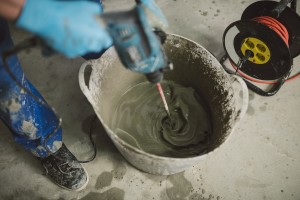What is the recipe for dry pack mortar?
What is the recipe for dry pack mortar?
Dry pack mortar, also known as dry pack grout or dry pack concrete, is a mixture of cement, sand, and minimal water content. It is commonly used for applications such as repairing concrete surfaces, setting shower pans, or constructing slope floors. The recipe for dry pack mortar involves specific proportions of ingredients to ensure the desired consistency, workability, and strength. While the exact recipe may vary depending on the specific requirements and project conditions, here is a general guideline for preparing dry pack mortar:
Ingredients:
- Cement: Portland cement is typically used for dry pack mortar. The type of cement may vary based on the specific application and project requirements. Follow the manufacturer’s recommendations regarding the cement type and grade.
- Sand: Use clean, well-graded sand that is free from impurities such as clay, silt, or organic matter. The sand should conform to the appropriate standards for construction purposes.
- Water: Dry pack mortar requires minimal water content. The water-to-mortar ratio should be carefully controlled to achieve a dry and stiff consistency that holds its shape when compacted.
Recipe:
- Determine the required volume of dry pack mortar for your project. This can be calculated based on the area to be covered and the desired thickness of the mortar layer.
- Mix Ratio: A commonly used mix ratio for dry pack mortar is 1 part cement to 3 or 4 parts sand by volume. This ratio can be adjusted based on specific project requirements or as recommended by the manufacturer. It is important to maintain consistent proportions throughout the mixing process.
- Mixing Process:
- Measure the appropriate amount of cement and sand according to the desired mix ratio. It is recommended to use a bucket or container to measure the ingredients accurately.
- Combine the cement and sand in a clean mixing container or mortar mixer. Mix them together thoroughly until they are evenly distributed. You can use a shovel or a mixing tool to achieve a homogenous mixture.
- Gradually add water while continuing to mix. Add water in small increments and mix thoroughly after each addition. The goal is to achieve a dry and stiff consistency where the mortar holds its shape when squeezed in your hand.
- Testing the Consistency:
- To ensure the mortar has the correct consistency, perform a slump test. Take a handful of the mixed mortar and squeeze it tightly in your hand. The mortar should retain its shape without excess water seeping out. It should crumble when lightly tapped.
- Adjustments:
- If the mortar is too dry and does not hold its shape, gradually add small amounts of water while mixing until the desired consistency is achieved.
- If the mortar is too wet and loses its shape easily, add small amounts of cement and sand in the correct proportions to achieve the desired consistency.
It is important to note that the recipe for dry pack mortar may vary based on specific project requirements, such as load-bearing capacity, working conditions, or climate. Always refer to the manufacturer’s guidelines and specifications for the particular dry pack mortar product you are using, as they may provide specific instructions and recommendations for mixing ratios and proportions.
Adhering to the proper recipe and mixing procedures will help ensure that the dry pack mortar has the desired strength, workability, and durability for your construction application.
